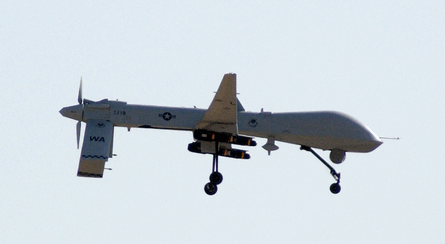Electronic warfare is the latest mission added to the US Air Force's hunter-killer-scout role for the General Atomics MQ-1 Predator and MQ-9 Reaper unmanned air vehicles.
The USAF is paying Northrop Grumman $54.9 million to integrate the payload now flying aboard its Lockheed U-2 surveillance aircraft with the MQ-1. The payload is used to intercept low-band communications, such as mobile phones. The contract also covers the development of a preliminary design of the payload for the MQ-9 fleet, but with performance scaled-up from the MQ-1 package.
The latest version of Northrop's airborne signals intelligence payload, the ASIP-1C, is scheduled to enter flight tests on the MQ-1 in May 2009 and be fielded operationally in 2010. No schedule has been given for the MQ-9's expanded ASIP-2C payload.
"With this award, we will deliver a new capability that leverages the air force's prior investment on the basic ASIP programme - not just in development savings through product reuse, but also savings through common production, logistics support, sustainability and sensor upgrades," says Imad Bitar, vice-president of the Electromagnetic Systems Laboratory at Northrop Grumman Mission Systems.
 |
|---|
© USAF |
The new contract gives Northrop five aircraft customers for ASIP, to include upgraded versions of the company's RQ-4 Global Hawk UAV and the modernised sensor suite for the US Army's Guardrail surveillance fleet, for which the company also serves as the prime contractor.
The UK was forced to destroy one of its Reaper UAVs in early April, after the surveillance asset made a forced landing during a mission over southern Afghanistan. The Ministry of Defence says mechanical factors are suspected to have caused the incident. A BAE Systems Harrier strike aircraft destroyed the UAV after some of its sensitive equipment had been recovered by British forces, the MoD says.
Source: Flight International























